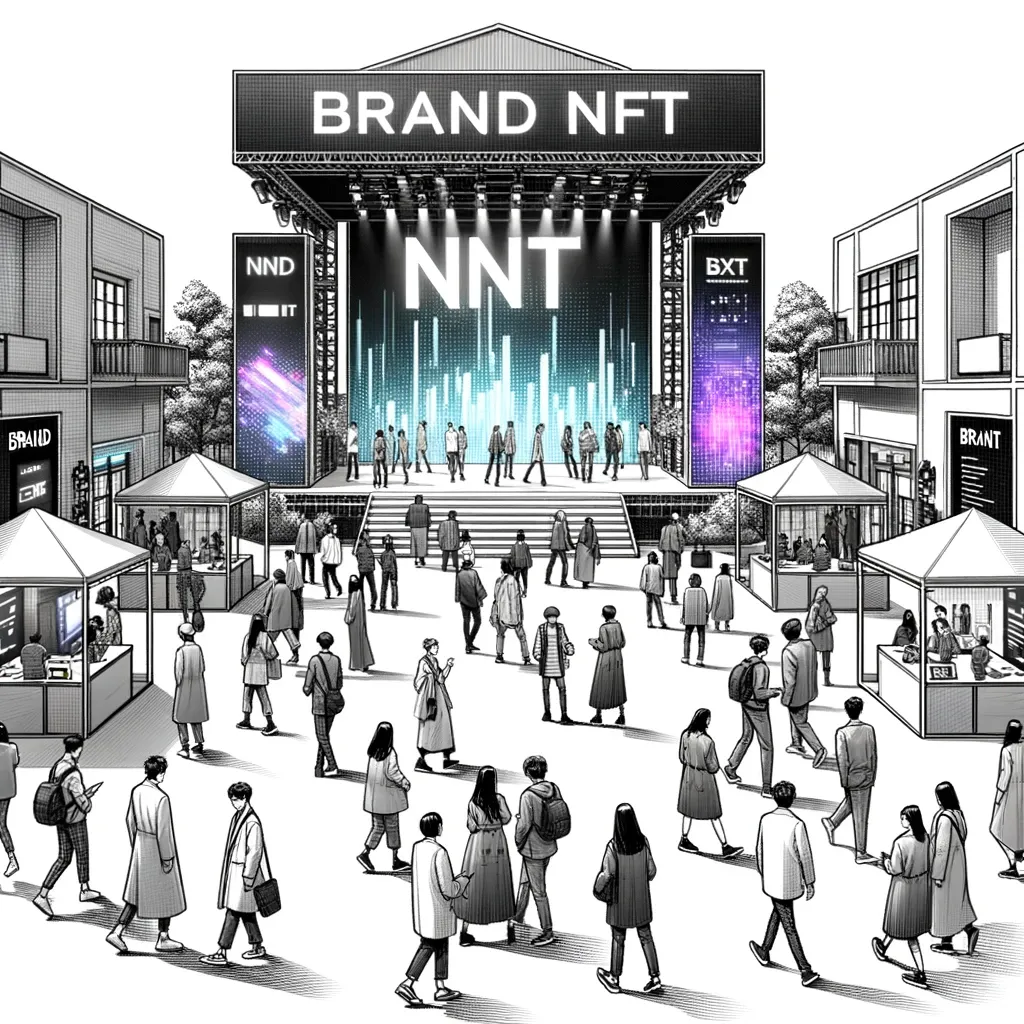
If Web3 for Brands is going to have a lasting impact, it’s essential to assess Brand NFT drops in the same way as other brand media activations. After all, Brand NFT drops resemble “advertising campaigns” that may ultimately lead to revenue, but primarily focus on enhancing brand engagement.
It’s worth noting that NFTs were reported to have experienced a significant loss in value, with over a 95% decrease. However, considering that an average of 90 Web3 brand projects are launched every quarter, is their primary objective immediate revenue generation?
Of course not, for example, Brand3index categorizes those brand initiatives under 4 brand objectives:
- Reach and Engage New Audiences: Connect with gamers and the GenZ community in ways that truly resonate.
- Monetize Brand Image: Build brand’s image and cultivate brand owned communities to supercharge engagement and profitability.
- Reward Loyal Consumers: Gamify CRM programs to reward and engage your most loyal customers and extend their engagement.
- Certify Brand Products: Establish trust and authenticity by certifying brand’s products through blockchain.
Across all initiatives, revenue remains the ultimate goal, but its seems that brands are clearly using Web3 and NFTs specifically as marketing channels to drive brand equity. Early academic research points us in this direction. One of the direct consequences of this development is that:
Brands can no longer rely solely on revenue as the main criterion for success, nor on other metrics, which are not very representative of the full value of a “drop”, such as “speed of sale” of NFTs, more synonymous with a “vanity metric” than with a real performance indicator (KPI).
Like all “media activations”, we believe that the effectiveness of branded NFT programs must be evaluated across the entire marketing funnel, namely from Awareness to Engagement to Action. We think that at the heart of this effectiveness, lies the Utility of the NFT and the Engagement it arouses which makes it successful.
Below, I present a fresh outlook on assessing the performance of Brand NFTs. The goal is to assist brands in identifying suitable Key Performance Indicators (KPIs) and guiding them away from merely conducting “promotional NFT launches” towards building “NFT brand equity: with an imperative of co-owned, shared and sustainable value, and where success is evaluated across the three stages of the marketing funnel: from awareness, to engagement and action.
The three pillars of Effectiveness of Brand NFT drops: Awareness, Engagement, Action.

Awareness: it’s the first point of contact to make the audience aware of the offer. It is the spark that should attract attention and arouse interest. Drops are organized almost systematically by activating user communities via social networks (twitter, discord, etc.) and other more traditional PR means. Objective: attract attention.
Engagement: This is where the “Utility” of the NFT comes in. Engagement doesn’t just refer to interaction; it’s a meaningful connection. When brands venture into the “NFT space”, the Utility they offer becomes the lynchpin of engagement. It is the value proposition that goes beyond simple ownership, offering exclusive experiences, privileges or opportunities to the holder. This is where most branded NFTs fail today. As such, the launch a few months ago of a “DAO” attached to NFTs from NYX, a brand of the L’Oréal group, is interesting but also of concern. Although the initiative shows the way to more developed collaboration with user communities, it struggles to engage its audience and community over the long term. Other counter examples specifically in the airline and retail industries show that some NFT programs outperfom competition thanks to sustained engagement, althought some of those programs are not as heavily supported from a budget standpoint. Yes, money is important but it can not buy everything, communities are able to make the difference. I will share more insights on this in another article.
Action: it is the culmination of Awareness and Engagement. It is the tangible commitment, the decision to invest, motivated by the perceived usefulness and the value attributed to the NFT. Action must be sustained over time as shown by the enduring engagement the program offers. In our measurement approach we take this dimension into account as well. Action must last for lasting performance of Brand’s NFTs.
The Utility of NFTs: The Heart of Engagement
Engagement remains the keypilar of the impact of branded NFTs. At the center of this commitment is the“Utility”. Brands that successfully develop their NFTs with strong Utility — whether co-creation of content, participation in brand decisions or access to exclusive experiences, or a combination of the whole — strengthen the connection with their COMMUNITY. It is this bond that guarantees lasting commitment and shared value.
Shared Value and Co-creation
The NFT space offers a unique opportunity for brands to co-create with their communities. It’s not just about shared content; it’s about shared values, shared vision and shared success.
When NFT holders feel part of a co-created story, they are more likely to stay engaged and contribute sustainably to the brand ecosystem.

The Performance Score of a Branded NFT: A Holistic Assessment of Marketing Impact.
The overall Performance Score of a branded NFT program therefore becomes even more crucial and goes beyond the simple income generated or even the “speed” of distribution of NFTs.
This score summarizes the combined impact of Awareness, Engagement, and Action (sales or other actions). As mentioned, the Performance Score is strongly influenced by the depth and quality of Engagement.
When an NFT drop garners significant attention (reflected in the Awareness Score) but lacks substantial Utility value, Engagement tends to remain at an average level, often leading to mixed outcomes in terms of Action. Presently, many measured programs are observed to fall into this particular predicament.
As an example, the NFT drops within the automotive sector provide valuable insights and underscore the pivotal role of engagement in elucidating the performance of programs initiated by brands like Porsche, Renault, Hyundai, and Alpine (you can review Performance Scores for various Automotive NFT programs here). Among these, all the programs fall short in fostering sustained engagement, even though a few programs, such as Porsche and Renault, excel in generating strong awareness. However, their inability to translate this awareness into robust engagement ultimately impacts their overall performance, as gauged by the Performance Score. As mentioned earlier, some programs outperform others, and I will soon delve into a detailed breakdown in a dedicated article.
From “promotional launches” of NFTs to the construction of “NFT brand equity”: the imperative of co-owned, shared and sustainable value.
To date, most sectors seem to have yet mastered the effectiveness of “a brand drop”, a successfull “NFT campaign” able to simultaneously drive strong Awareness, Engagement and Action.
To this end, the Performance Scores measured by Brand3index remain largely open to improvement. This fact invites brand managers to critically evaluate the value proposition carried by branded NFT programs (the famous “Utility”).
It’s essential for brands to view NFTs as a vehicle for delivering brand value, rather than merely treating them as a promotional tool for quick launches that lack shared value and long-term profitability. Brands should genuinely perceive NFTs as drivers of Brand Equity, prioritizing their role in building and enhancing the brand’s value over using them solely as promotional instruments.
The moment has come for brands to transition from mere “NFT promotions” to the creation of shared, enduring value, which is the sole authentic route to achieving effective ENGAGEMENT, the ultimate key to success.
Conclusion
OpenSea’s recent declaration to cease royalty collections on NFTs marks the inception of a new era for brand NFTs, one where genuine value is derived not solely from financial gains but also from profound, enduring engagement and shared experiences
Brands that recognize and exploit the power of Utility that they offer in their NFT programs will be able to deploy “win/win” Web3 marketing and will lay the foundations for a new type of marketing, that of shared value, where Utility and Engagement will be the true indicators of success.
The efforts made by brands like Gucci, Starbucks, and even Reddit are truly inspiring in this context. Gucci, despite being a leader in the luxury sector, demonstrates that there is still room for enhancement in fully integrating long-term Web3 engagement opportunities. On the other hand, Nike appears to have successfully embedded these opportunities within its brand community culture, with its Swoosh initiative playing a pivotal role.
More comprehensive content driven by brand-specific Key Performance Indicators (KPIs) will soon become available, offering insights into what strategies prove effective or ineffective in building successful Brand NFT programs.
Until then, let’s persevere and remain committed to assisting brands and Web3 creators in the genuine development of “Web3 Brands”!
Feel free to connect and share, as together we work towards constructing a sustainable Web3 environment for brands to thrive.
#brands #web3 #NFT #KPI #marketing


 Performance Score: Unveiling Holistic Brand NFT Impact Across Awareness, Engagement and Action
Performance Score: Unveiling Holistic Brand NFT Impact Across Awareness, Engagement and Action 

